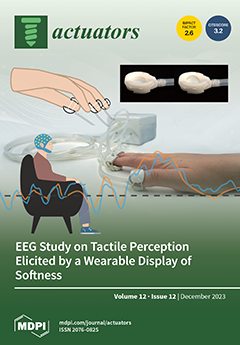This study examined how various plasma actuator (PA) configurations affect the passage vortex (PV) reduction in a linear turbine cascade (LTC) utilizing dielectric barrier discharge PAs. The experiments were carried out under three specific layout conditions: axial placement of the PA, slanted placement
[...] Read more.
This study examined how various plasma actuator (PA) configurations affect the passage vortex (PV) reduction in a linear turbine cascade (LTC) utilizing dielectric barrier discharge PAs. The experiments were carried out under three specific layout conditions: axial placement of the PA, slanted placement at the blade inlet, and slanted placement inside the blade. Particle image velocimetry was employed to measure the velocity distribution of the secondary flow at the LTC exit, followed by an analysis of the streamline patterns, turbulence intensity distribution, and vorticity distribution. At a Reynolds number of 3.7 × 10
4, the PA with an oblique orientation at the blade inlet provided the most effective PV suppression. The average value of the secondary flow velocity and the peak vorticity value at the LTC exit decreased by 59.0% and 68.8%, respectively, compared to the no-control case. Furthermore, the wind tunnel blower’s rotation speed was modified, adjustments were made to the LTC’s mainstream velocity, and the Reynolds number transitioned from 1.0 × 10
4 to 9.9 × 10
4, approximately 10 times. When the slanted PA was used at the blade inlet, the PV suppression effect was the highest. The peak vorticity value owing to the PV at the LTC exit decreased by 62.9% at the lowest Reynolds number of 1.0 × 10
4. The Reynolds number increased with a higher mainstream velocity and decreased flow induced by the PA, consequently reducing the PV suppression effect. However, the drive of the PA was effective even under the most severe conditions (9.9 × 10
4), and the peak vorticity value was reduced by 20.2%.
Full article





